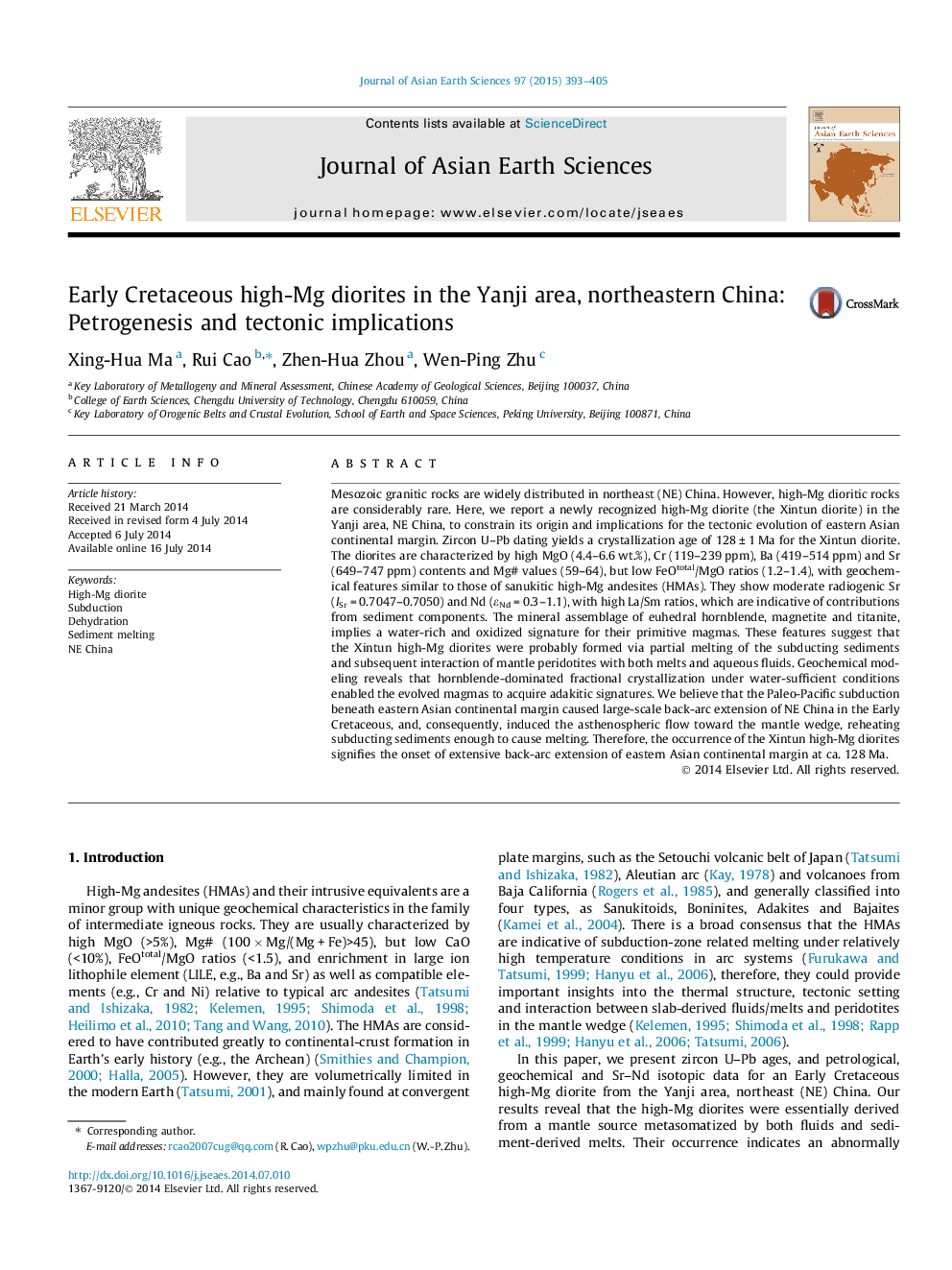| کد مقاله | کد نشریه | سال انتشار | مقاله انگلیسی | نسخه تمام متن |
|---|---|---|---|---|
| 4730445 | 1356758 | 2015 | 13 صفحه PDF | دانلود رایگان |

• An Early Cretaceous high-Mg diorite is newly recognized in the Yanji area, NE China.
• It was formed by interaction of sediment melts and fluids with mantle peridotites.
• The onset of extensive back-arc extension in NE China occurred at ca. 128 Ma.
Mesozoic granitic rocks are widely distributed in northeast (NE) China. However, high-Mg dioritic rocks are considerably rare. Here, we report a newly recognized high-Mg diorite (the Xintun diorite) in the Yanji area, NE China, to constrain its origin and implications for the tectonic evolution of eastern Asian continental margin. Zircon U–Pb dating yields a crystallization age of 128 ± 1 Ma for the Xintun diorite. The diorites are characterized by high MgO (4.4–6.6 wt.%), Cr (119–239 ppm), Ba (419–514 ppm) and Sr (649–747 ppm) contents and Mg# values (59–64), but low FeOtotal/MgO ratios (1.2–1.4), with geochemical features similar to those of sanukitic high-Mg andesites (HMAs). They show moderate radiogenic Sr (ISr = 0.7047–0.7050) and Nd (εNd = 0.3–1.1), with high La/Sm ratios, which are indicative of contributions from sediment components. The mineral assemblage of euhedral hornblende, magnetite and titanite, implies a water-rich and oxidized signature for their primitive magmas. These features suggest that the Xintun high-Mg diorites were probably formed via partial melting of the subducting sediments and subsequent interaction of mantle peridotites with both melts and aqueous fluids. Geochemical modeling reveals that hornblende-dominated fractional crystallization under water-sufficient conditions enabled the evolved magmas to acquire adakitic signatures. We believe that the Paleo-Pacific subduction beneath eastern Asian continental margin caused large-scale back-arc extension of NE China in the Early Cretaceous, and, consequently, induced the asthenospheric flow toward the mantle wedge, reheating subducting sediments enough to cause melting. Therefore, the occurrence of the Xintun high-Mg diorites signifies the onset of extensive back-arc extension of eastern Asian continental margin at ca. 128 Ma.
Figure optionsDownload as PowerPoint slide
Journal: Journal of Asian Earth Sciences - Volume 97, Part B, 1 January 2015, Pages 393–405